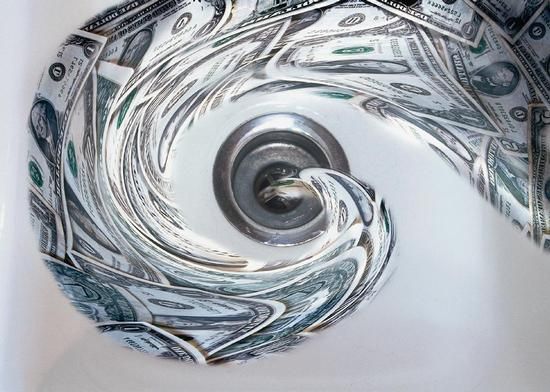I often talk about how QE has had diminishing returns from QE1 to whatever we’re calling the latest phase of the program. That is, with asset prices selling substantially below par, the Fed was able to come in and instill confidence in investors that mortgage backed securities weren’t worth 30 cents on the dollar. This was essentially a huge capital injection into the banking sector and had a colossal impact on the economy. But as asset prices have surged (and even become overvalued in some cases) the impact of QE has become less obvious.
In his latest note David Rosenberg highlights 5 reasons why he believes QE has had diminishing returns and only benefited a select portion of the US economy:
“1. Is it still the worst economic recovery ever.
2. The Fed eased and eased and eased, but bank credit growth has been anemic to say the least – a critical element in this expansion and the lack of credit growth has caused the economy’s trajectory to have changed materially from what we have experienced in the past six decades.
3. Everyone seems worried about the impact on higher mortgage rates on the housing market and yet this recovery in residential real estate has had little to do with Fed policy or what bond yields are doing. Affordability at is most lucrative levels this cycle did little to entice first time buyers, who still command a recession-like 30% shares of sales activity (the first time buyer shares of resale activity fell to 28% last month from 34% a year ago and 36% two years ago). This has been and remains a housing market dominated by all-cash institutional investor deals aimed at buying-for-rent.
4. The “wealth effect” only works if the positive shock is deemed to be permanent as opposed to transitory. I am amazed that this basic premise of permanency and the impact on expectations managed to escape the Fed escape-velocity models. The newly found net worth must be seen as more than temporary, but who doesn’t know that all these capital gains, whether through equities or housing, weren’t artificially stimulated by Fed policy as opposed to some major positive shock from underlying private sector economic forces?
5. What the Fed managed to do this cycle was help the rich get richer with no major positive multiplier impact on the real economy. Sorry, but Peoria Illinois, probably does not know how to locate the corner of Broad and Wall. So the Fed, by virtue of its excursions into the private marketplace for capital, manages to engineer the mother of all Potemkin rallies, sending the S&P 500 up 140% from the 2007 trough to attain record highs by May of this year (even with the June swoon, the SP 500 still managed to eke out a 2.4% advance in the second quarter and is up 12.6% for the year in the best first-half performance since 1998 when GDP growth was 5.5% … for this the Fed should just continue with the status quo?). It took but six years to make a new high in the stock market. In the Great Depression, it took 25 years. Bravo!”
Source: Gluskin Sheff
Mr. Roche is the Founder and Chief Investment Officer of Discipline Funds.Discipline Funds is a low fee financial advisory firm with a focus on helping people be more disciplined with their finances.
He is also the author of Pragmatic Capitalism: What Every Investor Needs to Understand About Money and Finance, Understanding the Modern Monetary System and Understanding Modern Portfolio Construction.


Comments are closed.